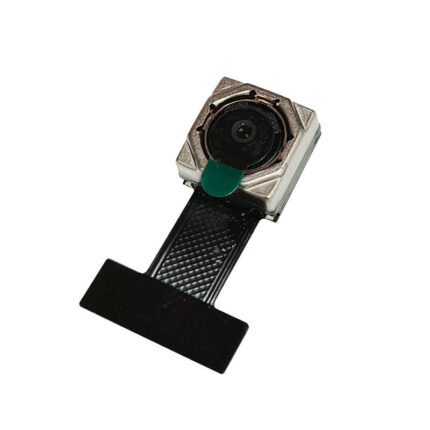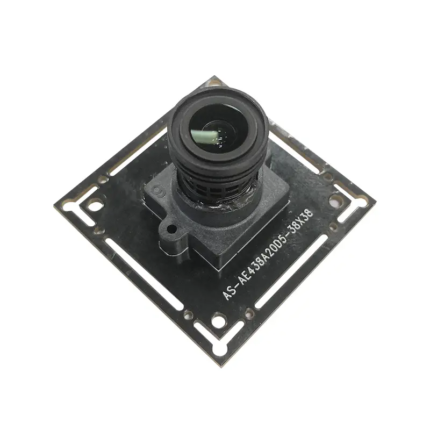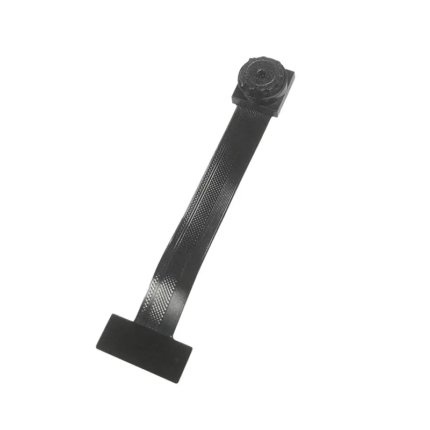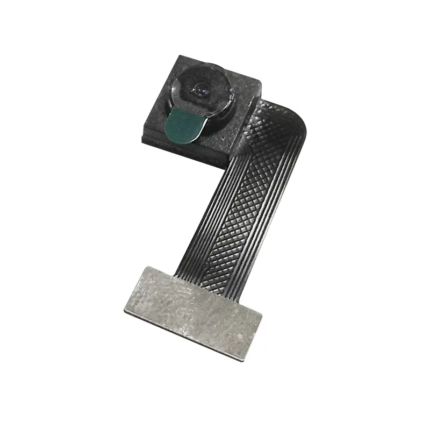Dvp Camera Module
We have professional capabilities from custom design to manufacturing of Dvp camera modules, providing OEM and ODM services.
Dvp camera modules can be fully customized to meet the needs of your project.
DGZX SC035HGS HD 0.3MP VGA 180fps B&W/Color Global Exposure DVP Camera Module
DGZX 0.8MP DVP BF3901 1/13 with ISP YUV low light camera module
DGZX 1.3MP DVP HD 720P RAW YUV 30fps Camera Module
DGZX 1MP HD 720P FPC DVP camera module
DGZX 5MP DVP/MIPI HD Auto Focus Camera Module
DGZX 5MP wide-angle OV5645 2K MIPI to DVP camera module
DGZX 5MP wide-angle OV5645 2K MIPI to DVP camera module
DGZX AR0234 2MP 1080P Colour Global Exposure High Speed 120fps Dvp Camera Module
DGZX DVP 0.3MP 60fps Night Vision IR Camera Module
DGZX DVP 0.3MP ESP32 VGA 60fps ISP YUV BF3005 camera module
DGZX DVP 0.3MP global shutter SC031GS VGA high-speed 180 frame black and white camera module
DGZX DVP 0.3MP HD Global Shutter 180FPS Camera Module
DVP Camera module customized OEM/ODM manufacturers
Dogoozx is a Dvp camera OEM manufacturer and supplier from China. We have provided Dvp camera module customization and product manufacturing to many companies around the world, including Europe, the United States, the Middle East, South Korea, etc. We have been providing customers with high-quality, low-price, high-performance, competitive camera module products and solutions.
We have professional capabilities from custom design to manufacturing, providing OEM and ODM services. Dvp camera modules can be fully customized to meet the needs of your project.
Benefits of choosing our OEM and customization services:
Professional OEM and ODM services
Industry-leading warranty services
Provide a set of customized solutions to meet your project needs
24-hour after-sales service to answer all kinds of questions for you.
What is a DVP camera module?
A DVP camera module is a camera module that uses a DVP (Digital Video Port) interface. It is specifically used to obtain video signals from embedded systems and transmit them to other devices for processing.
Components of DVP camera module
Lens: Responsible for capturing external light and focusing it onto the image sensor.
Image sensor: Converts the light captured by the lens into electrical signals.
Common types of image sensors are CMOS (complementary metal oxide semiconductor) and CCD (charge coupled device). CMOS sensors have the advantages of low power consumption, high integration, and low cost, while CCD sensors have the characteristics of high imaging quality and low noise.
Analog-to-digital converter (A/D converter): Converts the analog electrical signal output by the image sensor into a digital signal for subsequent digital signal processing. The performance of the analog-to-digital converter directly affects the key indicators of the camera, such as resolution, color reproduction, and dynamic range.
DVP interface: Responsible for transmitting digital signals from the camera module to external devices, such as processors or storage devices.
Other auxiliary components:
Infrared cutoff filter: Used to filter out infrared rays to ensure that the camera can image normally under visible light conditions.
Autofocus module: Used to realize the autofocus function of the camera and improve the clarity and accuracy of imaging.
Standard and housing: Used to fix and protect the various components of the camera module to ensure that it can work properly under various environmental conditions
Advantages of DVP camera module
Excellent image processing capability:
The DVP camera module has a built-in digital signal processor (DSP), which can perform various filtering, enhancement and noise reduction on the image, so as to capture clearer, more realistic and accurate images.
Excellent imaging capability:
The DVP camera module performs well in terms of resolution, which can reach hundreds of thousands or even millions of pixels.
With the continuous development of technology, the standard image sensor of the DVP camera module has been upgraded from 1/4-inch CMOS to 1/2.8-inch, 1/2.5-inch or larger CMOS or CCD sensors, which enables the camera to obtain more pixels at the same shooting distance, improving the details and clarity of the image.
Various interface options:
DVP camera module provides a variety of interface options, such as USB, MIPI, CSI and Ethernet, which are convenient for access to various client devices without being troubled by interface restrictions.
Communication and interface advantages:
DVP camera module supports two-way audio and video calls, which can meet the needs of users for audio and video calls.
Although the transmission rate of the DVP interface is slower than that of interfaces such as MIPI, it has the characteristics of simple connection and stable transmission, which is suitable for application scenarios with low speed requirements.
Data encryption and security:
Some DVP camera modules have built-in encryption engines and hardware-level security chips, which can protect data from being stolen or tampered with during video transmission, ensuring data security.
Wide range of applications: DVP camera modules are widely used in consumer electronics such as mobile phones, digital cameras, tablets, and laptops, helping these devices to take high-quality photos and videos.
In addition, DVP camera modules also play an important role in medical equipment, security systems, and machine vision systems.
Types of DVP Camera Modules
VGA Camera Modules
VGA camera modules are low-resolution camera modules. They usually have a resolution of 640 x 480 pixels, which is suitable for basic image and video capture.
CMOS Camera Modules
CMOS camera modules are widely used in modern devices such as smartphones. They offer better image quality and low power consumption. They are also more affordable than other camera modules.
CCD Camera Modules
CCD camera modules are often used in professional cameras and medical devices. They offer high image quality and better color reproduction, making them suitable for high-end applications.
Autofocus Camera Modules
Autofocus camera modules can adjust the focus by themselves and are commonly used in high-end smartphones and digital cameras to provide users with clear and sharp images.
Infrared (IR) Camera Modules
IR camera modules are specialized modules used to capture images in low-light conditions. They use infrared illumination to capture images and are used in security systems, surveillance cameras, and other specialized applications.
DVP camera module applications
Consumer electronics field
Mobile phones: DVP camera modules are widely used in smartphones to take high-quality photos and videos to meet users' daily shooting needs.
Digital Cameras: In digital cameras, DVP camera modules provide excellent imaging capabilities and image processing performance to help users capture wonderful moments.
Tablets and Laptops: The DVP camera modules in these devices are not only used for video calls, but also for shooting documents, recording life and other scenes.
Medical Equipment
Operating Rooms and Clinics: DVP camera modules can provide doctors and nurses with high-definition photos and videos to help them better assess the condition, perform surgical operations, etc.
Telemedicine: With DVP camera modules, doctors can remotely view the patient's condition and make online diagnoses and treatment recommendations.
Security Systems
Video Surveillance: DVP camera modules play an important role in video surveillance systems, capturing and recording images of the monitored area in real time, helping users to detect and respond to potential security threats in a timely manner.
Face Recognition: With the high resolution and imaging capabilities of DVP camera modules, security systems can achieve more accurate face recognition functions to improve safety and accuracy.
Machine Vision and Industrial Inspection
Product Inspection and Analysis: DVP camera modules can be used in machine vision systems to inspect and analyze the manufacturing process of products, helping manufacturers optimize product design and production processes.
Automated production lines: On automated production lines, DVP camera modules can be used for material identification, positioning, tracking and other functions to improve production efficiency and accuracy.
Automotive field
Dashcams: DVP camera modules are used in dashcams to record the driving process and surrounding environment of vehicles, providing strong evidence for determining the responsibility of traffic accidents.
Intelligent driving assistance system: In the intelligent driving assistance system, the DVP camera module can capture images around the vehicle in real time, provide accurate perception information to the system, and help the driver better understand the vehicle status and surrounding environment.
Other applications
Internet of Things (IoT): DVP camera modules can also be used in IoT devices to realize remote monitoring, smart home and other functions.
Education: In the field of education, DVP camera modules can be used in scenarios such as remote teaching and online meetings to provide high-quality audio and video communication services.
DVP camera module customization demand process
1. You can provide drawings or samples, or request files developed by our engineering staff.
2. Communication: We will communicate with you in detail to determine the products you need, and try to set up the most suitable products for you according to your needs.
3. Sample development: Determine the details and delivery time of the developed samples. Communicate at any time to ensure smooth progress.
4. Sample testing: Test and age according to your application, feedback the test results, no modification, and mass production.
Frequently Asked Questions about USB Camera Modules
1. What is a DVP interface camera?
A: A DVP interface camera, that is, a camera using a Digital Video Port interface, is a camera used to transmit video data between an image sensor and a processor.
2. How many pixels can a DVP camera module be customized?
A: Customized according to demand, it can support 0.3MP/VGA
1MP/720P, 2MP/1080P, 3MP/1080P, 4MP/2KP, 5MP/2KP, 8MP/4KP, 12MP/4KP, 13MP/4K, 16MP/4KP, 48MP/8K;
3. What is the difference between DVP and MIPI?
A: A camera module is an image sensor that integrates a lens, control electronics, and interfaces such as CSI, Ethernet, or ordinary raw low-voltage differential signals.
4. What is an ESP32 CAM module?
A: ESP32-CAM is a low-cost development board based on ESP32 that is compact and has a built-in camera. It is an ideal solution for IoT applications, prototyping and DIY projects. The board integrates WiFi, classic Bluetooth and low-power BLE, and is equipped with 2 high-performance 32-bit LX6 CPUs.
5. What is the Raspberry Pi camera module?
A: The Raspberry Pi camera board is an add-on module designed for Raspberry Pi hardware. It connects to the Raspberry Pi hardware through a custom CSI interface. In still shooting mode, the native resolution of the sensor is 5 megapixels. In video mode, it supports shooting up to 1080p resolution at 30 frames per second.
6. What is FPC in the camera?
A: The FPC camera module is a small-size camera module mounted on a flexible circuit board. It is small in size and easy to design and mechanically assemble. Only the sensor and camera lens are installed, and then connected to the processor through a flexible printed circuit board (FPC).
7. What is included in the after-sales service?
A: The after-sales service content of the customized DVP camera module may vary from supplier to supplier, but generally includes product warranty, technical support, troubleshooting and repair services. When choosing a supplier, you should understand its after-sales service policy and commitment so that you can get timely and effective support when needed. In addition, you can also negotiate and sign a service contract with the supplier to clarify matters such as service content, standards, and deadlines.















